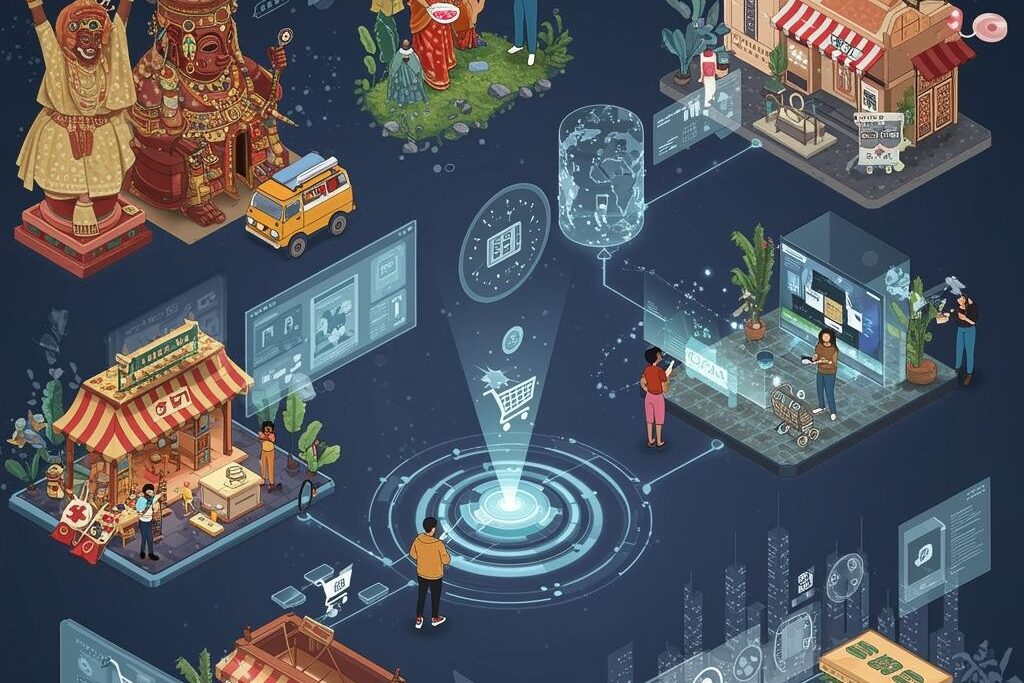E-commerce has become a cornerstone of global retail, and as we move into 2025, its growth shows no signs of slowing. The ongoing digitalization of modern life, coupled with the rise of artificial intelligence (AI), mobile commerce, and sustainable practices, is revolutionizing how consumers interact with brands. With over 5.4 billion internet users worldwide (Statista: Internet Usage Worldwide), the opportunities for businesses to thrive in this space are boundless. This year, global retail e-commerce sales are projected to surpass $5 trillion (Statista: E-commerce Sales Worldwide), cementing e-commerce as an indispensable force in the retail sector.
Key Drivers of E-commerce Growth in 2025
- Mobile Commerce (M-commerce) Takes Center Stage
Mobile commerce continues to dominate e-commerce traffic, with smartphones accounting for nearly 85% of all retail website visits globally (Statista: Mobile Commerce Share). Regions like Asia, particularly China and South Korea, lead the way, with over 75% of online sales generated via mobile devices (eMarketer: Mobile Commerce). Businesses that prioritize mobile-first strategies, such as optimizing websites for mobile use and launching dedicated e-commerce apps, will gain a competitive edge. - AI-Powered Personalization
AI-driven tools are shaping the customer journey in unprecedented ways. From personalized product recommendations to dynamic pricing and automated chatbots, AI is enhancing user experiences and driving conversion rates. In fact, AI is predicted to influence over 40% of all e-commerce transactions by the end of 2025 (McKinsey: AI in Personalization). By leveraging predictive analytics and machine learning, businesses can anticipate customer needs and create highly customized shopping experiences. - Sustainability as a Consumer Priority
As consumers become more environmentally conscious, sustainability has moved to the forefront of e-commerce. Parcel stations, eco-friendly packaging, and carbon-neutral shipping options are becoming the norm. Companies that integrate green practices into their operations not only reduce their environmental footprint but also build stronger connections with eco-conscious shoppers (Forbes: Sustainability in E-commerce). - Emerging Markets and Internet Penetration
While developed markets like the U.S., Europe, and parts of Asia continue to refine their e-commerce strategies, emerging markets such as Africa, South America, and parts of Southeast Asia are experiencing a surge in internet penetration. These regions represent untapped potential for businesses willing to localize their strategies and cater to unique market needs (World Bank: Internet Access in Emerging Markets).
E-commerce Market Leaders in 2025
Global e-commerce platforms remain dominant, with Amazon leading in gross merchandise value (GMV) and traffic. However, competitors such as Alibaba (including Taobao and Tmall) and Pinduoduo continue to gain ground, particularly in Asia. The rise of platforms like Temu demonstrates the increasing demand for affordable, mobile-friendly e-commerce solutions (Statista: Global E-commerce Rankings).
One notable trend is the growing influence of social commerce, where platforms like Instagram, TikTok, and WeChat integrate shopping capabilities directly into their apps. By 2025, social commerce is expected to account for 17% of global e-commerce sales, reshaping how consumers discover and purchase products online (eMarketer: Social Commerce Trends).
What’s New in 2025? My Ideas and Predictions
- Live Shopping Events
One of the most exciting trends in 2025 is the rise of live shopping experiences. Inspired by social commerce, live shopping events combine entertainment with e-commerce, allowing shoppers to interact with hosts, ask questions in real time, and make purchases seamlessly. Platforms like TikTok and Instagram are already leading the way, and we’re likely to see brands across industries adopt this strategy to engage younger audiences and drive sales (TechCrunch: Live Shopping Expansion). - Subscription-Based Models
E-commerce is evolving beyond one-time purchases. Subscription-based models, offering curated products or exclusive member benefits, are gaining traction. Brands like Amazon Prime and Dollar Shave Club have already proven this model’s effectiveness, and 2025 will see more businesses adopting subscription services to drive recurring revenue (Harvard Business Review: Subscription Models). - Augmented Reality (AR) Shopping Experiences
AR technology is revolutionizing the way consumers interact with products online. From virtual try-ons for clothing and accessories to visualizing furniture in your home, AR enhances the online shopping experience. By 2025, AR is expected to influence over 15% of e-commerce sales, making it a must-have for forward-thinking brands (Statista: AR in E-commerce). - Hyper-Personalization with AI
Building on the AI trend, hyper-personalization will redefine customer engagement. Using advanced analytics and real-time data, businesses can create tailored experiences for individual shoppers, from product recommendations to marketing messages. This level of personalization fosters brand loyalty and increases customer lifetime value (McKinsey: Personalization Trends).
Core Strategies for E-commerce Success in 2025
To thrive in the ever-evolving e-commerce landscape, businesses must adapt and innovate. Here are some foundational strategies to consider:
- Optimize for Mobile and Social Commerce
With the majority of traffic coming from mobile devices, ensure your website is mobile-friendly and integrate with social media platforms offering direct shopping experiences. Fast load times, intuitive navigation, and responsive design are critical (Google Developers: Mobile Optimization). - Leverage Data and Analytics
Utilize data analytics to understand customer behavior, track trends, and make informed decisions. Predictive analytics can help anticipate demand, manage inventory, and personalize marketing campaigns (Forbes: Data Analytics in E-commerce). - Invest in AI and Automation
From chatbots to inventory management, AI and automation can streamline operations and enhance customer experiences. Explore tools that integrate seamlessly with your e-commerce platform to maximize efficiency (eMarketer: AI in Retail). - Embrace Sustainability
Adopt eco-friendly practices, from biodegradable packaging to green logistics. Highlight these efforts in your marketing to attract environmentally conscious consumers (Statista: Sustainability in Retail). - Tap Into Live Shopping and AR
Experiment with live shopping events or AR-driven experiences to engage customers in immersive and interactive ways. These strategies not only boost sales but also create memorable brand experiences (TechCrunch: AR and Live Shopping).
Final Thoughts: The Future of E-commerce
As we progress into 2025, e-commerce is no longer just about convenience—it’s about creating meaningful, personalized, and sustainable experiences for consumers. The integration of AI, mobile-first strategies, and emerging technologies like AR and live shopping are setting new standards for the industry.
For businesses, the key to success lies in staying agile and customer-centric. Whether you’re a startup looking to establish your online presence or a global brand aiming to refine your strategies, the opportunities in e-commerce are limitless.
Let’s connect to explore how your business can thrive in this dynamic landscape. I’d love to share insights from my experience in global e-commerce innovation and help you navigate the trends shaping 2025 and beyond.




